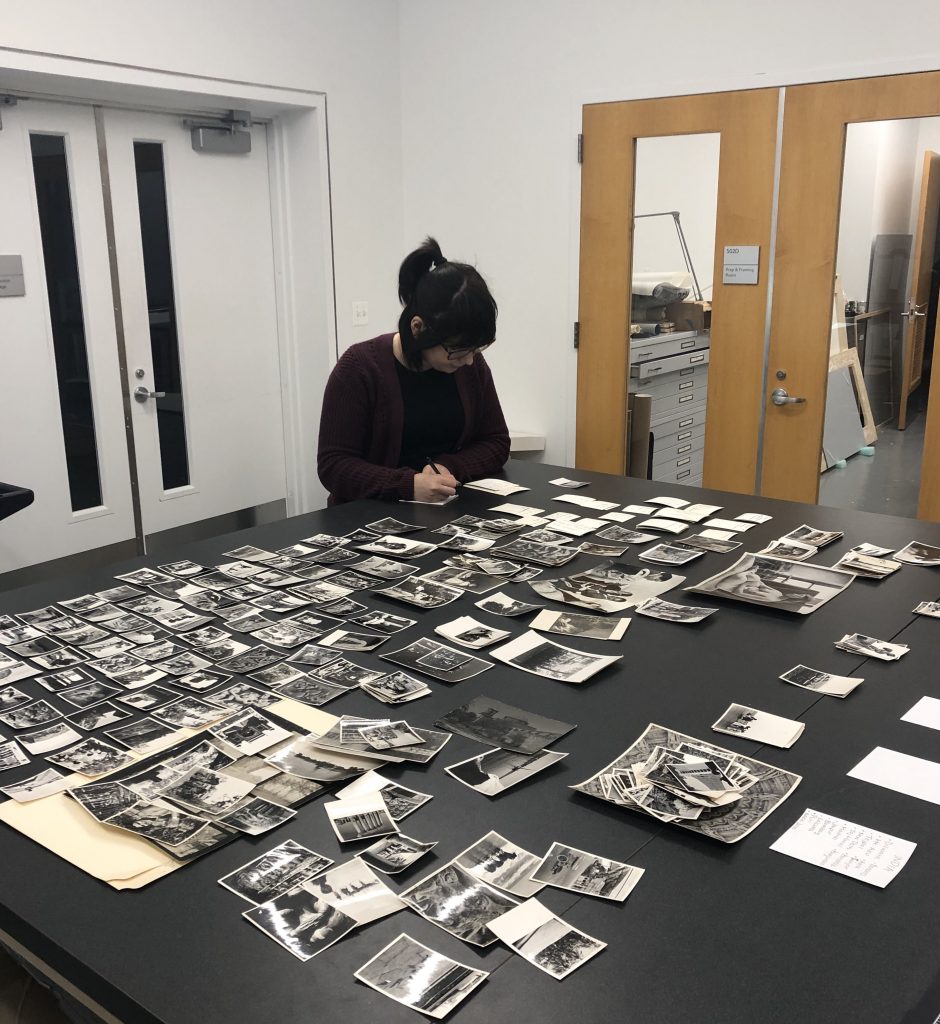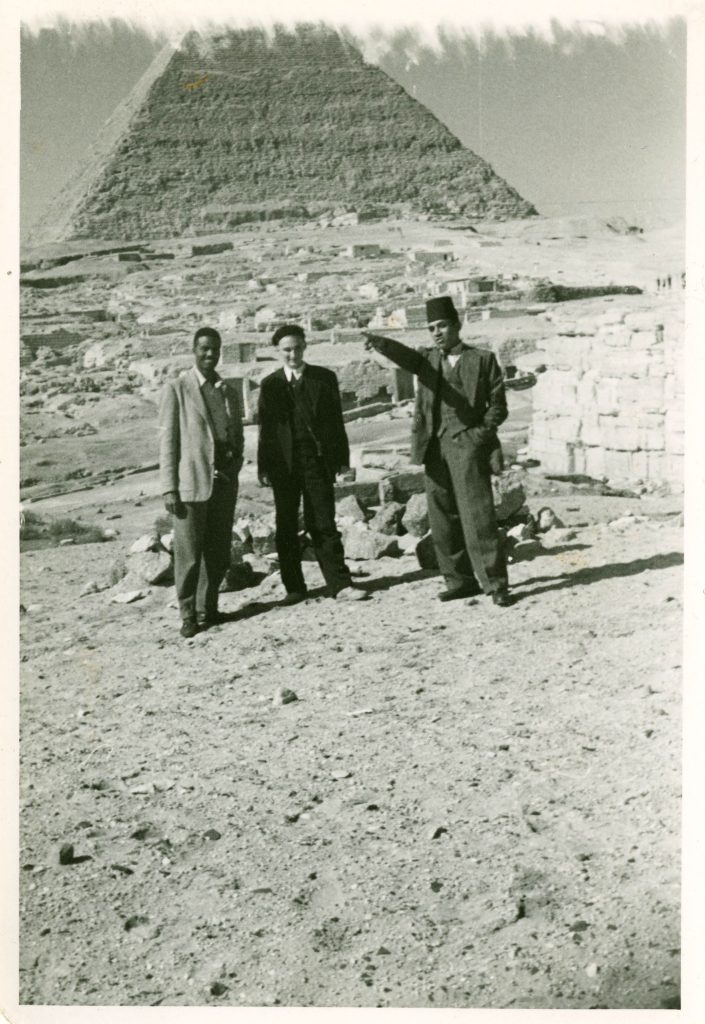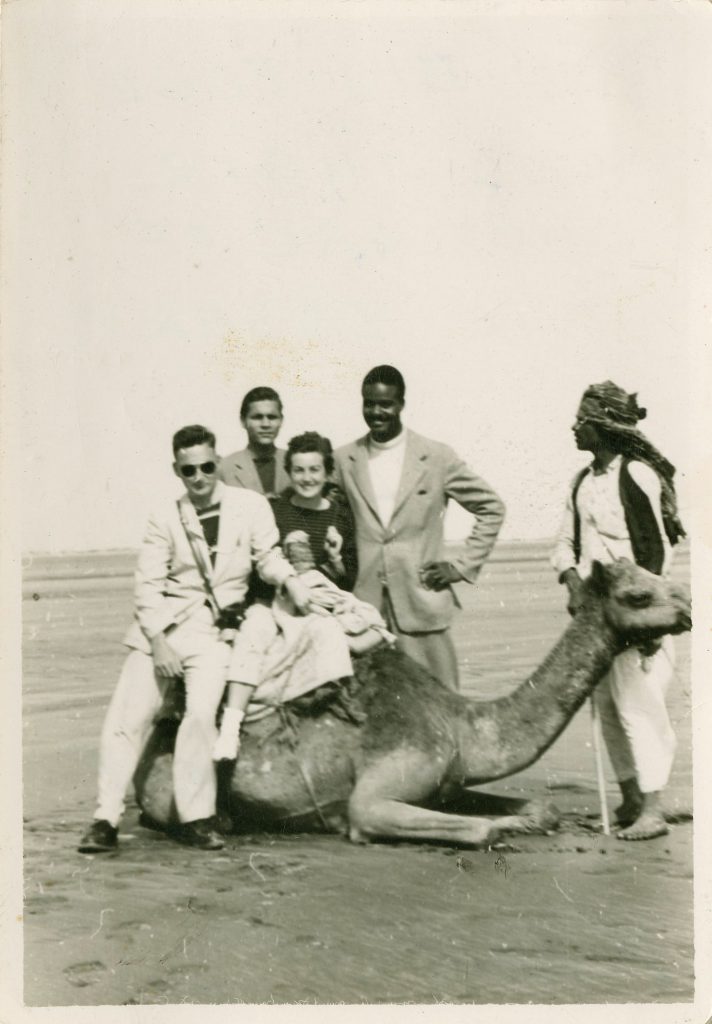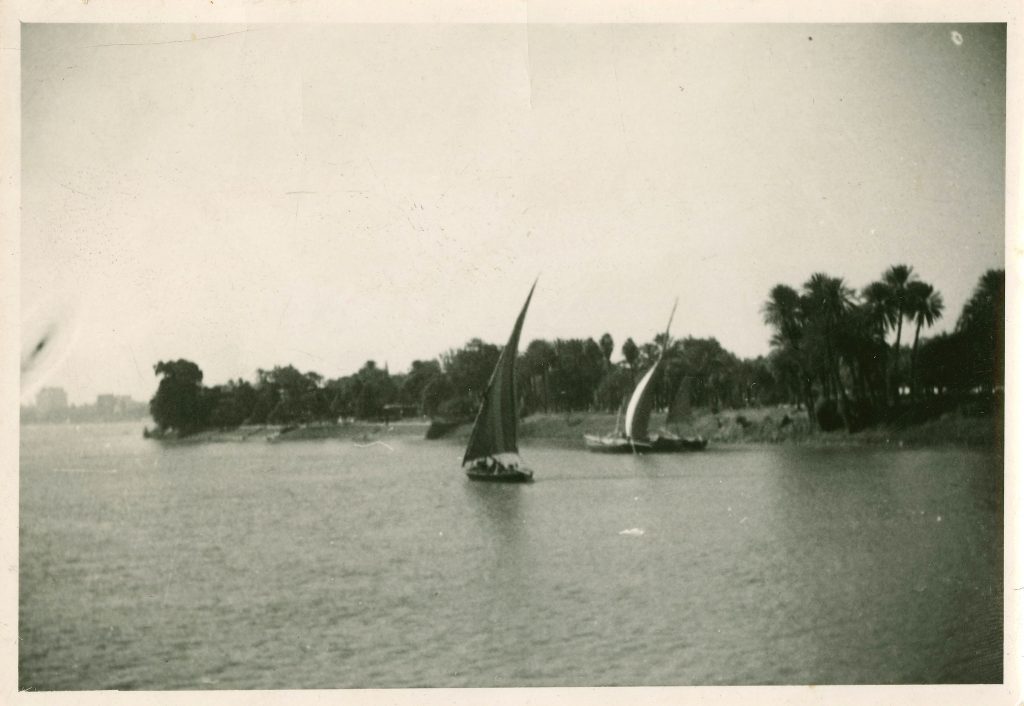Contributed by Kelin Baldridge and Jahna Auerbach, the John Rhoden papers processing team
Each Friday, we intend to publish a summary of what we accomplished, learned, and discovered in our work during the week leading up to it in the Weekly Roundup series. Here’s the first of many!

Accomplished so far:
- Completed preliminary survey
- Completed Processing plan
- Completed preliminary Intellectual arrangement
- Begun physically sorting objects
Next up:
- Complete sorting
- Finalize physical arrangement
- Inventory of photographic items
- Select items to be digitized
Week 1(ish) Lessons:
One thing we learned in creating the preliminary intellectual arrangement is how dynamic an intellectual arrangement can be. One of PAFA archivist Hoang Tran’s catchphrases is “things they don’t teach you in archives school” and the level of depth and complexity that can be included in an arrangement is certainly not something I was prepared for.
I had initially created an intellectual arrangement that was separated into series based on John Rhoden’s life: Professional, Personal, and Artist Series. The professional series was then separated by major milestones in his career. Straight away, I liked this series because I felt it rendered the items more accessible as they were grouped with what would likely be most relevant to researchers. However, I quickly became afraid of the arrangement. Lessons from archives school about avoiding charging items with meaning, limiting their understanding, and ensuring that an arrangement is fully neutral started to come back to me. As a result, I created a second (very safe, very textbook) intellectual arrangement that separated the materials by document type – correspondence, contracts, personal documents, etc.
When presenting these two arrangements to Hoang and Rhoden Curator Brittany Webb, I was reassured that the more dynamic arrangement was more suitable. Brittany reassured me that organizing the papers according to career milestones rather than document type would be far more useful to a researcher. Furthermore, Hoang taught me that the way archivists handle collections will vary depending on the context. For our purposes, the PAFA archives are used for art research, primarily by high-level students and weathered scholars. This environmental context can then inform how an archivist approaches the intellectual arrangement.
With the help of Hoang, I ultimately created a preliminary intellectual arrangement that included the following series: exhibitions, commissions, fellowships/grants/awards, press, teaching, gallery sales, artwork, and personal. We did away with the restrictive professional, personal, and artwork series while keeping the emphasis on his career milestones. It is much longer than my “safe” (document type focused) intellectual arrangement was, but it also better contextualizes the material and makes it more accessible.
Going forward, we expect the intellectual arrangement to evolve as we continue to become familiar with the collection. Furthermore, since the creation of the preliminary intellectual arrangement assistant archivist Jahna Auerbach joined the team and her perspective and input will no doubt help the arrangement evolve.

John in Egypt 
John in Pakistan
Week 1(ish) Discoveries:
Having the privilege to process a collection of a person as well-traveled as John Rhoden has proven to be both fun and challenging. Rhoden traveled to over twenty countries with the U.S. State Department between 1955 and 1959 and has piles of photographs documenting his numerous journeys. The majority of his photographs are unlabeled, which means that we have to rely on landscapes, architecture, and various other vague context clues to identify where the photographs were taken. A large portion of our research has consisted of targeted searches about visual topics such as South Asian sculpture, architecture terms for temples, and whether or not sail boats are common in Egypt. Some questions we have are dry, but some spark conversation between PAFA employees across disciplines. This has turned sorting photographs into a complex puzzle that we are constantly trying to put the pieces together. It also has taught us that some things are unknowable, if only temporarily, and that working with a large archival collection requires a focus on the big picture.

Richenda in Indonesia 
Sailboats in Egypt
This project, Rediscovering John W. Rhoden: Processing, Cataloging, Rehousing, and Digitizing the John W. Rhoden papers, is funded in part by the National Endowment for the Humanities, a federal agency.
ABOUT THE NATIONAL ENDOWMENT FOR THE HUMANITIES
Created in 1965 as an independent federal agency, the National Endowment for the Humanities supports research and learning in history, literature, philosophy, and other areas of the humanities by funding selected, peer-reviewed proposals from around the nation. Additional information about the National Endowment for the Humanities and its grant programs is available at: www.neh.gov.